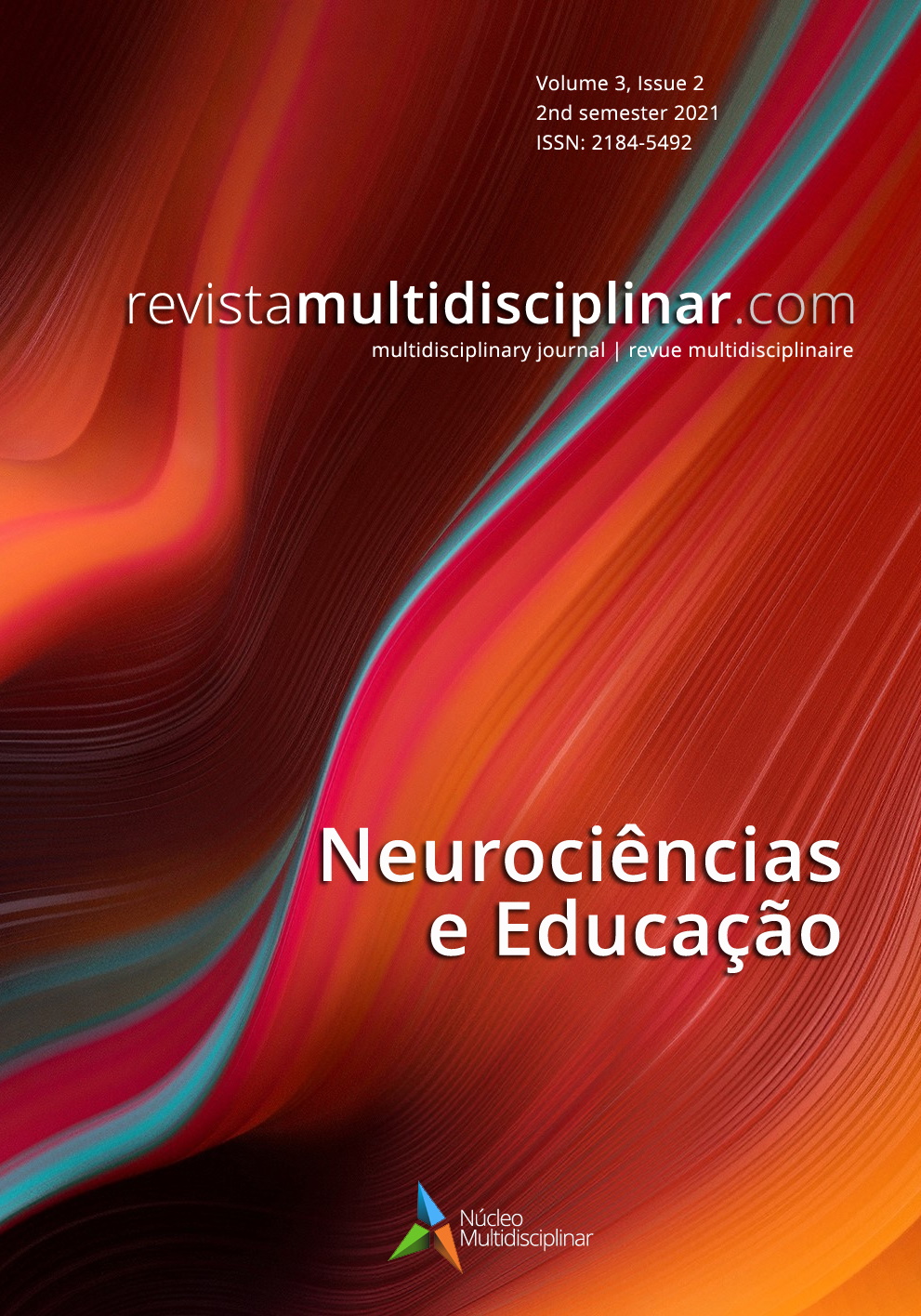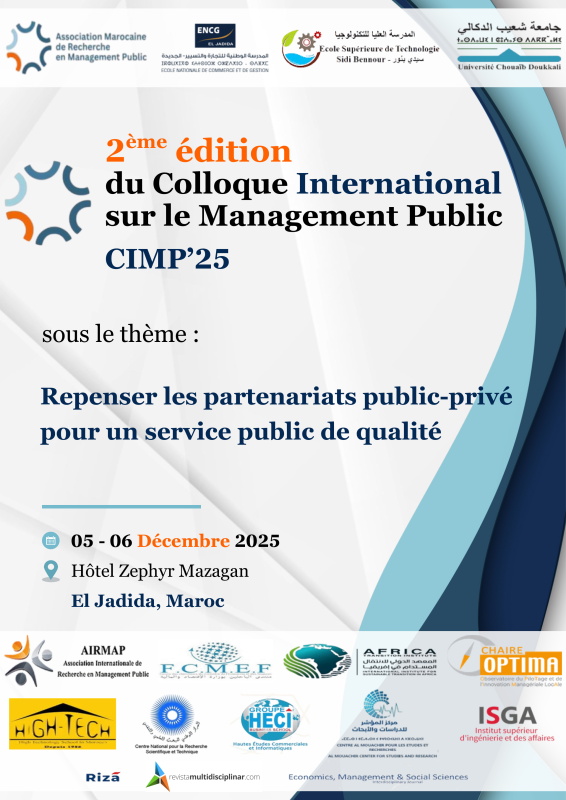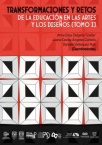Aspetos cronobiológicos e do sono associados ao neurodesenvolvimento e desempenho escolar em idade pediátrica
DOI:
https://doi.org/10.23882/NE2149Palavras-chave:
neurodesenvolvimento, performance académica, ritmos circadianos, sonoResumo
Os ritmos biológicos, e o sono enquanto seu representante de destaque, são fatores biofuncionais relevantes no desenvolvimento neuro-cognitivo e comportamental, com particular interesse no domínio pediátrico. Aspetos concretos, associados à homeostasia do sistema nervoso central e de funções superiores com o equilíbrio socio-afetivo, o juízo crítico, a consolidação de memórias e capacidade de aprendizagem, relacionam-se frequentemente, nestas fases da vida, com a estabilidade do sistema temporal circadiano e com a individualidade temporal definida pelo cronotipo. O sono inadequado ou insuficiente tem, por outro lado, um impacto negativo em diversos parâmetros biopsicossociais que interagem com esses domínios e que condicionam o normal desenvolvimento traduzido em alterações no desempenho neuro-cognitivo e comportamental. Esta revisão incide sobre os aspetos fundamentais da cronobiologia e da fisiologia do sono aplicados ao neurodesenvolvimento e sua aplicabilidade no contexto educacional em relação com o desempenho escolar.
Referências
Acosta, M. T. (2019). Sueño, memoria y aprendizaje [Sleep, memory and learning]. Medicina (Buenos Aires),79 (Suppl 3), 29-32. https://www.medicinabuenosaires.com/revistas/vol79-19/s3/s3-Acosta.pdf
Alfonsi, V., Palmizio, R., Rubino, A., Scarpelli, S., Gorgoni, M., D'Atri A., Pazzaglia, M., Ferrara, M., Giuliano, S., & De Gennaro, L. (2020). The Association Between School Start Time and Sleep Duration, Sustained Attention, and Academic Performance. Nature and Science of Sleep, 12, 1161-1172. https://doi.org/10.2147/NSS.S273875
Allada, R., & Bass, J. (2021). Circadian Mechanisms in Medicine. New England Journal of Medicine, 384(6), 550-561. https://doi.org/10.1056/NEJMra1802337
Bacaro, V., Feige, B., Benz, F., Johann, A. F., De Bartolo, P., Devoto, A., Lombardo, C., et al. (2020). The Association between Diurnal Sleep Patterns and Emotions in Infants and Toddlers Attending Nursery. Brain Sciences, 10(11), 891. MDPI AG. http://dx.doi.org/10.3390/brainsci10110891
Bates, K., & Herzog, E. D. (2020). Maternal-Fetal Circadian Communication During Pregnancy. Frontiers in endocrinology, 11, 198. https://doi.org/10.3389/fendo.2020.00198
Bathory, E., & Tomopoulos, S. (2017). Sleep Regulation, Physiology and Development, Sleep Duration and Patterns, and Sleep Hygiene in Infants, Toddlers, and Preschool-Age Children. Current problems in pediatric and adolescent health care, 47(2), 29–42. https://doi.org/10.1016/j.cppeds.2016.12.001
Bauducco, S., Richardson, C., & Gradisar, M. (2020). Chronotype, circadian rhythms and mood. Current opin
Brownlow, J. A., Miller, K. E., & Gehrman, P. R. (2020). Insomnia and Cognitive Performance. Sleep medicine clinics, 15(1), 71–76. https://doi.org/10.1016/j.jsmc.2019.10.002
Challamel, M. J. (1992). Fonctions du sommeil paradoxal et ontogenèse [Functions of paradoxical sleep and ontogenesis]. Neurophysiologie clinique = Clinical neurophysiology, 22(2), 117–132. https://doi.org/10.1016/s0987-7053(05)80749-x
Chawla, J. K., Burgess S., & Heussler, H. (2020). The impact of sleep problems on functional and cognitive outcomes in children with Down syndrome: a review of the literature. Journal of Clinical Sleep Medicine,16(10), 1785-1795. https://doi.org/10.5664/jcsm.8630
Chennaoui, M., Léger, D., & Gomez-Merino, D. (2020). Sleep and the GH/IGF-1 axis: Consequences and countermeasures of sleep loss/disorders. Sleep Medicine Reviews, 49, 101223. https://doi.org/10.1016/j.smrv.2019.101223
De Beritto, T. V. (2020). Newborn Sleep: Patterns, Interventions, and Outcomes. Pediatric annals, 49(2), e82–e87. https://doi.org/10.3928/19382359-20200122-01
Dimakos, J., Gauthier-Gagné, G., Lin, L., Scholes, S., & Gruber, R. (2021). The Associations Between Sleep and Externalizing and Internalizing Problems in Children and Adolescents with Attention-Deficit/Hyperactivity Disorder: Empirical Findings, Clinical Implications, and Future Research Directions. Child and adolescent psychiatric clinics of North America, 30(1), 175–193. https://doi.org/10.1016/j.chc.2020.08.001
Ekambaram, V., & Owens, J. (2021). Medications Used for Pediatric Insomnia. Child and adolescent psychiatric clinics of North America, 30(1), 85–99. https://doi.org/10.1016/j.chc.2020.09.001
Hagström, K., Saarenpää-Heikkilä, O., Himanen, S. L., Lampinlampi, A. M., & Rantanen, K. (2020). Neurobehavioral Outcomes in School-Aged Children with Primary Snoring. Archives of clinical neuropsychology : the official journal of the National Academy of Neuropsychologists, 35(4), 401–412. https://doi.org/10.1093/arclin/acz053
Himelfarb, M., & Shatkin, J. P. (2021). Pediatric Insomnia. Child and adolescent psychiatric clinics of North America, 30(1), 117–129. https://doi.org/10.1016/j.chc.2020.08.004
Hsu, C.-N., & Tain, Y.-L. (2020). Light and Circadian Signaling Pathway in Pregnancy: Programming of Adult Health and Disease. International Journal of Molecular Sciences, 21(6), 2232. MDPI AG. Retrieved from http://dx.doi.org/10.3390/ijms21062232
Jafar, N. K., Tham, E. K., Eng, D. Z., Goh, D. Y., Teoh, O. H., Lee, Y. S., Shek, L. P., Yap, F., Chong, Y. S., Meaney, M. J., Gooley, J. J., Broekman, B. F., & Gusto Study Group (2017). The association between chronotype and sleep problems in preschool children. Sleep medicine, 30, 240–244. https://doi.org/10.1016/j.sleep.2016.11.015
Kim, S. Y., Han, S., Park, E. J., Yoo, H. J., Park, D., Suh, S., & Shin, Y. M. (2020) The relationship between smartphone overuse and sleep in younger children: a prospective cohort study. Journal of Clinical Sleep Medicine, 16(7), 1133-1139. https://doi.org/10.5664/jcsm.8446
Koronowski, K. B., & Sassone-Corsi, P. (2021). Communicating clocks shape circadian homeostasis. Science, 371(6530), eabd0951. https://doi.org/10.1126/science.abd0951
Lo Bue, A., Salvaggio, A., & Insalaco, G. (2020). Obstructive sleep apnea in developmental age. A narrative review. European journal of pediatrics, 179(3), 357–365. https://doi.org/10.1007/s00431-019-03557-8
Loy, S. L., Loo, R. S. X., Godfrey, K. M., Chong, Y.-S., Shek, L.P.-C., Tan, K. H., Chong, M. F.-F., Chan, J. K. Y., & Yap, F. (2020). Chrononutrition during Pregnancy: A Review on Maternal Night-Time Eating. Nutrients, 12(9), 2783. https://doi.org/10.3390/nu12092783
MacDonald, K. J., & Cote, K. A. (2021). Contributions of post-learning REM and NREM sleep to memory retrieval. Sleep Medicine Reviews, 59, 101453. https://doi.org/10.1016/j.smrv.2021.101453
Malkani, R. G., & Zee, P. C. (2020). Brain Stimulation for Improving Sleep and Memory. Sleep medicine clinics, 15(1), 101–115. https://doi.org/10.1016/j.jsmc.2019.11.002
Martin, C. A., Papadopoulos, N., Rinehart, N., & Sciberras, E. (2019). Associations Between Child Sleep Problems and Maternal Mental Health in Children with ADHD. Behavioral Sleep Medicine, 19(1), 12-25. https://doi.org/10.1080/15402002.2019.1696346
Miadich, S. A., Shrewsbury, A. M., Doane, L. D., Davis, M. C., Clifford, S., & Lemery-Chalfant, K. (2020). Children's sleep, impulsivity, and anger: shared genetic etiology and implications for developmental psychopathology. Journal of Child Psychology and Psychiatry (JCPP), 61(10), 1070-1079. https://doi.org/10.1111/jcpp.13328
Patke, A., Young, M.W., & Axelrod, S. (2020). Molecular mechanisms and physiological importance of circadian rhythms. Nature Reviews Molecular Cell Biology, 21, 67–84. https://doi.org/10.1038/s41580-019-0179-2
Rajaei, S., Kalantari, M., Pashazadeh Azari, Z., Tabatabaee, S. M., & Dunn, W. (2020). Sensory Processing Patterns and Sleep Quality in Primary School Children. Iranian journal of child neurology, 14(3), 57–68. https://www.ncbi.nlm.nih.gov/pmc/articles/PMC7468082/
Refinetti, R. (2012). Integration of biological clocks and rhythms. Comprehensive Physiology, 2(2), 1213-39. https://doi.org/10.1002/cphy.c100088
Ruiz-Herrera, N., Guillén-Riquelme, A., Díaz-Román, A., & Buela-Casal, G. (2021, January 07). Sleep, academic achievement, and cognitive performance in children with attention-deficit hyperactivity disorder: A polysomnographic study. Journal of Sleep Research. https://doi.org/10.1111/jsr.13275
Rzepka-Migut, B., & Paprocka, J. (2020). Efficacy and Safety of Melatonin Treatment in Children with Autism Spectrum Disorder and Attention-Deficit/Hyperactivity Disorder—A Review of the Literature. Brain Sciences, 10(4), 219. MDPI AG. http://dx.doi.org/10.3390/brainsci10040219
Sanabra, M., Gómez-Hinojosa, T., Grau, N., & Alda, J. A. (2021). Deficient Emotional Self-Regulation and Sleep Problems in ADHD with and without Pharmacological Treatment. Journal of Attention Disorders. https://doi.org/10.1177/1087054720986242
Staton, S., Rankin, P. S., Harding, M., Smith, S. S., Westwood, E., LeBourgeois, M. K., & Thorpe, K. J. (2020). Many naps, one nap, none: A systematic review and meta-analysis of napping patterns in children 0-12 years. Sleep medicine reviews, 50, 101247. https://doi.org/10.1016/j.smrv.2019.101247
Suardiaz-Muro, M., Morante-Ruiz, M., Ortega-Moreno, M., Ruiz, M. A., Martín-Plasencia, P., & Vela-Bueno, A. (2020). Sueño y rendimiento académico en estudiantes universitarios: revisión sistemática [Sleep and academic performance in university students: a systematic review]. Revista de neurologia, 71(2), 43–53. https://doi.org/10.33588/rn.7102.2020015
Sun, W., Ling, J., Zhu, X., Lee, T. M., & Li, S. X. (2019). Associations of weekday-to-weekend sleep differences with academic performance and health-related outcomes in school-age children and youths. Sleep medicine reviews, 46, 27–53. https://doi.org/10.1016/j.smrv.2019.04.003
Yavuz-Kodat, E., Reynaud, E., Geoffray, M.-M., Limousin, N., Franco, P., Bonnet-Brilhault, F., Bourgin, P., & Schroder, C. M. (2020). Disturbances of Continuous Sleep and Circadian Rhythms Account for Behavioral Difficulties in Children with Autism Spectrum Disorder. Journal of Clinical Medicine, 9(6), 1978. MDPI AG. Retrieved from http://dx.doi.org/10.3390/jcm9061978
Downloads
Publicado
Como Citar
Edição
Secção
Licença
Direitos de Autor (c) 2021 Miguel Meira e Cruz, Fernanda Dubourg

Este trabalho encontra-se publicado com a Creative Commons Atribuição-NãoComercial 4.0.









